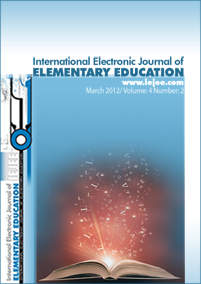References
Carter, M., McLaughlin, T. F., Derby, K. M. Schuler, H., & Everman, J. (2011). Differential effects of cover,
copy, and compare in spelling with four high school students with severe behavior disorders.
Academic Research International, 1, 44-52. Retrieved from: http://www.journals.savap. org.pk/
issue.html
Cates, G. L., Dunne, M., Erkfritz, K. N., Kivisto, A., Lee, N., & Wierzbicki, J. (2007).
Differential effects of two spelling procedures on acquisition, maintenance, and adaptation to reading.
Journal of Behavioral Education, 16, 70-81.
Cieslar, W., McLaughlin, T. F., & Derby, K. M. (2008). Effects of the copy, cover, and compare procedure
on the math and spelling performance of a high school student with behavioral disorder: A case
study. Preventing School Failure, 52(4), 45-51.
Graham, S., Harris, K. R., & Fink-Chorzempa, B. (2002). Contributions of spelling instruction to the
spelling, writing, and reading of poor spellers. Journal of Educational Psychology, 94, 669-686.
Graham, S., Harris, K. R., Fink-Chorzempa, B., & Adkins, M. (2004). Extra spelling instruction promotes
better spelling, writing, and reading performance right from the start. In A. Pincus (Ed.), Tips from
the experts: A compendium of advice on literacy instruction from educators and researchers. Long
Valley, NJ: NJIDA.
Karagiannakis, A. (2010). Classwide peer tutoring: Social status and self-concept of boys with and
without behavior problems. Dissertation Abstracts International Section A, 70.
Kazdin, A. E. (2010). Single-case research designs: Methods for clinical and applied settings (2nd ed.). New
York: Oxford University Press.
Mayfield, K. H., Glenn, I. M., & Vollmer, T. R. (2008). Teaching spelling through prompting and review
procedures using computer-based instruction. Journal of Behavioral Education, 17, 303-312.
Membrey, A., McLaughlin, T. F., Derby, K. M., & Antcliff, C. (2011). A modification of cover, copy, and
compare in spelling for three middle school students with multiple disabilities. International
Journal of Social Science and Education, 1(4), 491-505. Retrieved from:
http://advasol.net/?q=node/19
McLaughlin, T. F., & Skinner, C. H., (1996). Improving academic performance through selfmanagement:
Cover, copy, and compare. Intervention in School and Clinic, 32, 113–119.
McLaughlin, T. F., Weber, K. P., & Barretto, A. (2004). Spelling: Academic interventions. In T. S. Watson
& C. H. Skinner (Eds.), Encyclopedia of school psychology (pp. 317-320). New York, NY: Kluwer
Academic/Plenum Publishers.
Miller, A. D., Hall, S. W., & Heward, W. L. (1995). Effects of sequential 1-minute time trials with and
without inter-trial feedback and self-correlation on general and special education students'
fluency with math facts. Journal of Behavioral Education, 5, 319-345.
Murphy, J. F., Hern, C. L., Williams, R. L., & McLaughlin, T. F. (1990). The effects of the copy, cover, and
compare approach in increasing spelling accuracy with learning disabled students.
Contemporary Educational Psychology, 15, 378-386.
Rhymer, K. N., Dittmer, K. I., Skinner, C. H., & Jackson, B. (2000). Effectiveness of a multi-component
treatment for improving mathematics fluency. School Psychology Quarterly, 15, 40-51.
Rhymer, K. N., Henington, C., Skinner, C. H., & Looby, E. J. (1999). The effects of explicit timing on
mathematics performance in second-grade Caucasian and African American students. School
Psychology Quarterly, 14, 397-407.
Rhymer, K. N., Skinner, C. H., Henington, C., D'Reaux, R. A., & Sims, S. (1998). Effects of explicit timing on
mathematics problem completion rates in African-American third-grade elementary students.
Journal of Applied Behavior Analysis, 31, 673-677.
Rhymer, K. N., Skinner, C. H., Jackson, S., McNeill, S., Smith, T., & Jackson, B. (2002). The 1-minute explicit
timing intervention: The influence of mathematics problem difficulty. Journal of Instructional
Psychology, 29, 305-311.
Santoro, L., Coyne, M. D., & Simmons, D. C. (2006). The reading-spelling connection: Developing and
evaluating a beginning spelling intervention for children at risk of reading disability. Learning
Disabilities Research & Practice, 21, 122-133.
Skarr, A., McLaughlin, T. F., Derby, K. M., Meade, K., & Williams, R. L. (in press). A comparison of direct
instruction flashcards and cover, copy, compare to teach spelling to elementary school students.
Academic Research International, 2(2). Retrieved from: http://174.36.46.112/ ~savaporg/ journals
/issue.html
Skinner, C. H., Belfiore, P. J., & Pierce, N. (1992). Cover, copy, and compare: Increasing geography
accuracy in students with behavior disorders. Schools Psychology Review, 21, 73-81.
Skinner, C. H., Fletcher, P. A., & Henington, C. (1996). Increasing learning rates by increasing student
response rates: A summary of research. School Psychology Quarterly, 11, 313-325.
Skinner, C. H., McLaughlin, T. F., & Logan, P. (1997). Cover, copy, and compare: A self-managed
academic intervention effective across skills, students, and settings. Journal of Behavioral
Education, 7, 295-306.
Stading, M., Williams, R. L., & McLaughlin, T. F. (1996). Effects of copy, cover, and compare procedure
on multiplication facts mastery with a third grade girl with learning disabilities in a home setting.
Education & Treatment of Children, 19, 425-434.
Swanson, H. L., & Greenwood, C. R. (1996). Drill-repetition-practice as effective strategies for students
with learning disabilities: Research on the practices and behavior of effective teachers at the
Juniper Gardens Children's Project: Implications for the education of diverse learners. In H. L.
Swanson (Ed.). Research on classroom ecologies: Implications for inclusion of children with learning
disabilities (pp. 39-86). Mahwah, NJ: Lawrence Erlbaum Associates, Inc.
Van Houten, R., & Thompson, C. (1976) The effects of explicit timing on math performance. Journal of
Applied Behavior Analysis, 9, 227-230.
Van Houten, R., Hill, S. & Parson, M. (1975). An analysis of a performance feedback system: The effects
of timing and feedback, public posting and praise upon academic performance and peer
interaction. Journal of Applied Behavior Analysis, 8, 449-457.
Wanzek, J., Vaughn, S., Wexler, J., Swanson, E. A., Edmonds, M., & Kim, A. (2006). A synthesis of spelling
and reading interventions and their effects on the spelling outcomes of students with LD. Journal
of Learning Disabilities, 39, 528-543.
Wissick, C. A. (2005). Written language: When to consider technology. Technology in Action, 1(6), 1-12.
Woodcock, R. W., McGrew, W. S., & Mather, N. (2008). Woodcock Johnson Tests of Achievement (WJ III).
Rolling Meadows, IL: Riverside Publishing Company.
